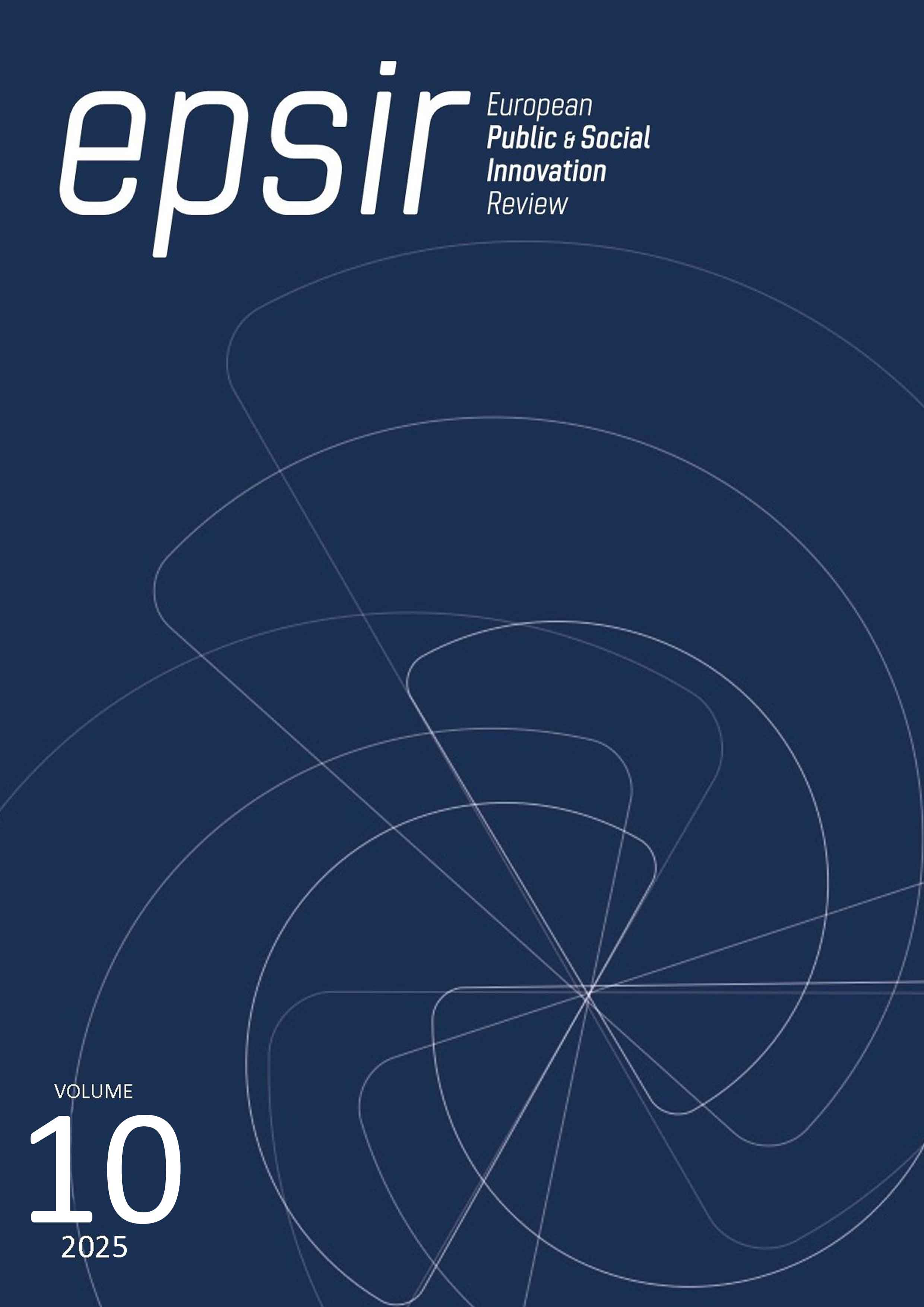High academic and sports performance. A challenge for higher education institutions and athletes
DOI:
https://doi.org/10.31637/epsir-2025-1798Palabras clave:
academic skills, resume, development, educational experience, social skills, students-athletes, subjects, universitiesResumen
Introduction: The crisis in US colleges arises from a dissonance between the educational mission and the lower academic performance of student-athletes, often seen as crucial figures in campus culture. Due to the high academic demands of traditional curricula, this issue has led to conflicting views between coaches, faculty, and administrators. Methodology: a qualitative and interpretive approach based on reviewing papers and NCAA documents. Results: Lower academic performance in athletes due to a lack of adaptation of curriculum as an educational experience to develop social and academic skills, integrating academic credits. Discussion: A faculty member should be included to close the gap and design subject content focused on athletes. Conclusions: Design a curriculum approach based on educational experience as a cornerstone for developing academic and social skills in student-athletes.
Descargas
Citas
Ashorn, L. (2009). The impact of extracurricular participation on the first-year college experience of freshmen in a college of agriculture (Thesis Master on Science). Texas Tech University. Lubbock.
Barefield, S., & McCallister, S. (1997). Social support in the athletic training room: athletes' expectations of staff and student athletic trainers. Journal of Athletics Training, 32(4), 333-338. https://pubmed.ncbi.nlm.nih.gov/16558469/
Brand, M. (2006). The role and value of intercollegiate athletics in universities. Journal of the Philosophy of Sport, 9-20. https://doi.org/10.1080/00948705.2006.9714687 DOI: https://doi.org/10.1080/00948705.2006.9714687
Buckley, P., & Lee, P. (2021). The impact of extra-curricular activity on the student experience. Active Learning in Higher Education, 22(1), 37-48. https://doi.org/10.1177/1469787418808988 DOI: https://doi.org/10.1177/1469787418808988
Calkins, C. (2022). Community Colleges & Athletics: Academic Success of student-athletes (Thesis Master of Science) Shawnee State University, Ohio.
Christie, N.G., & Dinham, S.M. (1991). Institutional and External Influences on Social Integration in the Freshman Year. The Journal of Higher Education, 62(4), 412–436. https://doi.org/10.1080/00221546.1991.11774140 DOI: https://doi.org/10.1080/00221546.1991.11774140
Comeaux, E., & Harrison, C.K. (2011). A Conceptual Model of Academic Success for Student–Athletes. Educational Researcher, 40(5), 235-245. https://doi.org/10.3102/0013189X11415260 DOI: https://doi.org/10.3102/0013189X11415260
Conners, R. T., Cochrum, R., Lund, B., & Sanchez, J. A. (2023). Transformational Leadership Perceptions of NCAA Collegiate Athletes and Non-Athletes.Journal of Sport Behavior. Journal of Sport Behavior, 46(1), 18-35. https://bit.ly/46cZUff
Creswell, J. (2009). Research Design. Qualitative, quantitative, and mixed method approaches. Sage.
Crismore, A. (1982). An Evaluation of Developmental Writing Courses for Specially Admitted Students (Athletes). Indiana University.
Huml, M. R., Hancock, M.G., & Bergman, M.J. (2014). Additional support or extravagant cost? Student-athletes' perceptions on athletic academic centers. Journal of Issues in Intercollegiate Athletics, 7(2), 409-430. https://scholarcommons.sc.edu/jiia/vol7/iss1/2
Krumrei-Mancuso, E., Newton, F., Kim, E., & Wilcox, D. (2013). Psychosocial Factors Predicting First-Year College Student Success. Journal of College Student Development, 54(3), 247-266. https://doi.org/10.1353/csd.2013.0034 DOI: https://doi.org/10.1353/csd.2013.0034
McHugh, C., & Sedlacek, W. (1991). A Study of Prejudice Toward University Student-Athletes. Journal of Counseling & Development, 70(1), 189–193.
https://doi.org/10.1002/j.1556-6676.1991.tb01582.x DOI: https://doi.org/10.1002/j.1556-6676.1991.tb01582.x
NCAA. (2001). Academic Characteristics of the 1997 and 1998 Prospective Student-Athlete Cohorts in the NCAA Initial Eligibility Clearinghouse. NCAA Research.
NCAA. (2003). NCAA Division I Manual. NCAA Research.
NCAA. (1996). A longitudinal Analysis of NCAA Division I Graduation Rate Data. NCAA Research.
Quivy, R., & Van Carnpenhoud, L. (1995). Manuel de recherche en social sciences. Dunod.
Rodriguez, A. (2014). International Student-Athletes and Stress: Implications for American Universities' Administrators. Journal of Academic Administration in Higher Education, 10(2), pp. 39–47. https://eric.ed.gov/?id=EJ1140940
Stansbury, S. (2003). Evaluating Academic Success in Student Athletes: A Literature Review. Concept. Interdisciplinary Journal of Graduate Studies. Villanova University, 27(1), 2-17. https://concept.journals.villanova.edu/article/view/140
Skoglund, K., Wall, T. J., & Kiene, D. (2018). Impact of Supplemental Instruction Participation on College Freshman Retention. Learning Assistance Review, 23(1), 115-135. https://files.eric.ed.gov/fulltext/EJ1170114.pdf
Stripling, J. (2018). Inside Auburn's Secret Effort to Advance an Athlete-Friendly Curriculum. The Chronicle of Higher Education, 1-9. https://bit.ly/4d6e5Wd
Weight, E., & Huml, M. (2016). Education Through Athletics: An Examination of Academic Courses Designed for NCAA Athletes. Journal of Intercollegiate Sport, 9(1), 352-378. http://dx.doi.org/10.1123/jis.2015-0051 DOI: https://doi.org/10.1123/jis.2015-0051
Weight, E., Harry, M., Navarro, K., & Lewis, M. (2020). Integrating Athletics Within the Academy: Educational Experiences of Athletes, Musicians, and Traditional Students. Journal of Issues in Intercollegiate Athletics, 13(11), 143-169 https://scholarcommons.sc.edu/jiia/vol13/iss1/11
Williams, J., Colles, C., and Allen., K. (2010). Division III Athletes: Perceptions of Faculty Interactions and Academic Support Services. Journal of Issues in Intercollegiate Athletics, 3(1), 211-233. https://scholarcommons.sc.edu/jiia/vol3/iss1/12
Descargas
Publicado
Cómo citar
Número
Sección
Licencia
Derechos de autor 2025 Jesus Alfonso Omana Guerrero, Giuseppe Vanoni

Esta obra está bajo una licencia internacional Creative Commons Atribución-NoComercial-SinDerivadas 4.0.
Authors who publish with this journal agree to the following terms:- Authors retain copyright and grant the journal right of first publication with the work simultaneously licensed under Creative Commons Non Commercial, No Derivatives Attribution 4.0. International (CC BY-NC-ND 4.0.), that allows others to share the work with an acknowledgement of the work's authorship and initial publication in this journal.
- Authors are able to enter into separate, additional contractual arrangements for the non-exclusive distribution of the journal's published version of the work (e.g., post it to an institutional repository or publish it in a book), with an acknowledgement of its initial publication in this journal.
- Authors are permitted and encouraged to post their work online (e.g., in institutional repositories or on their website) prior to and during the submission process, as it can lead to productive exchanges, as well as earlier and greater citation of published work (See The Effect of Open Access).



